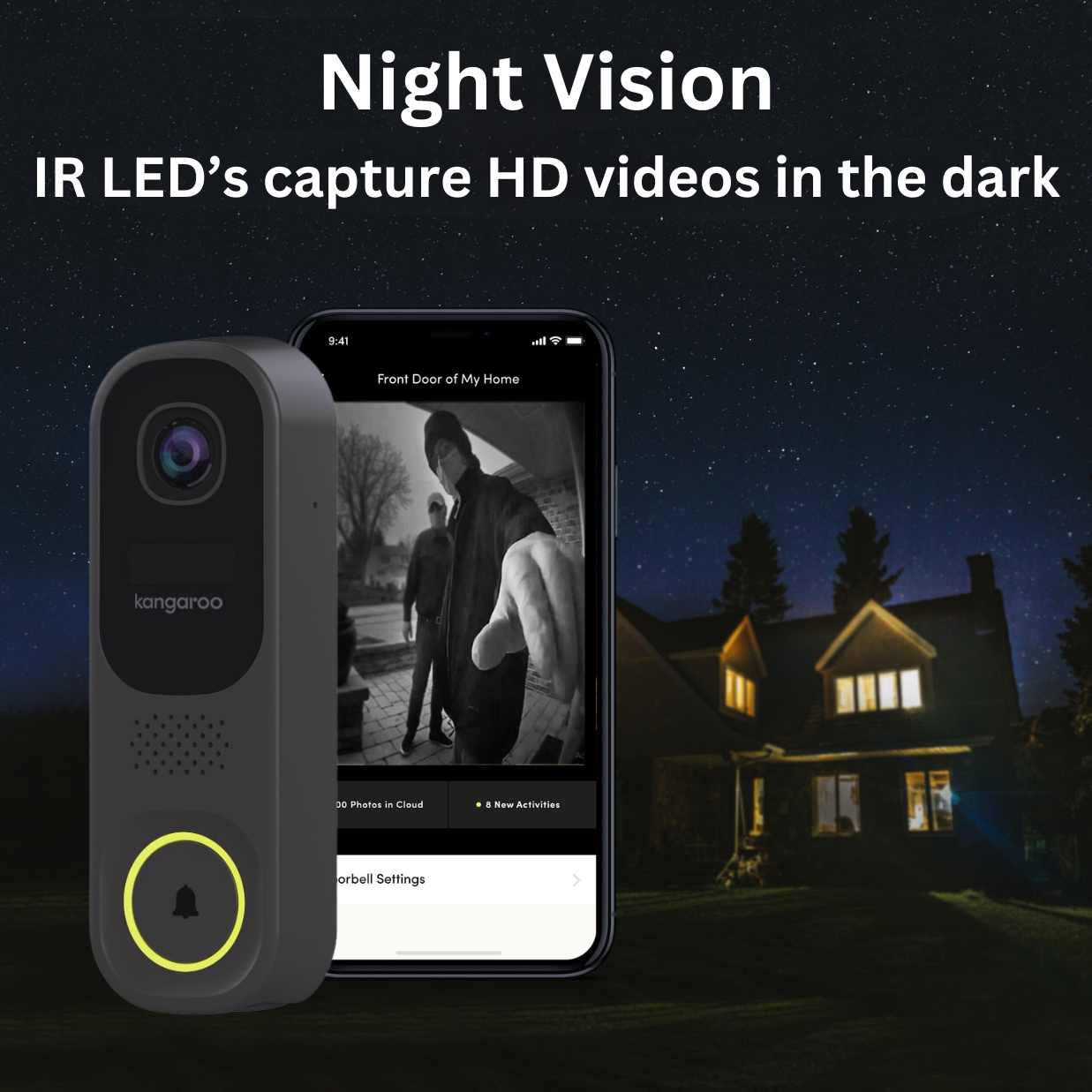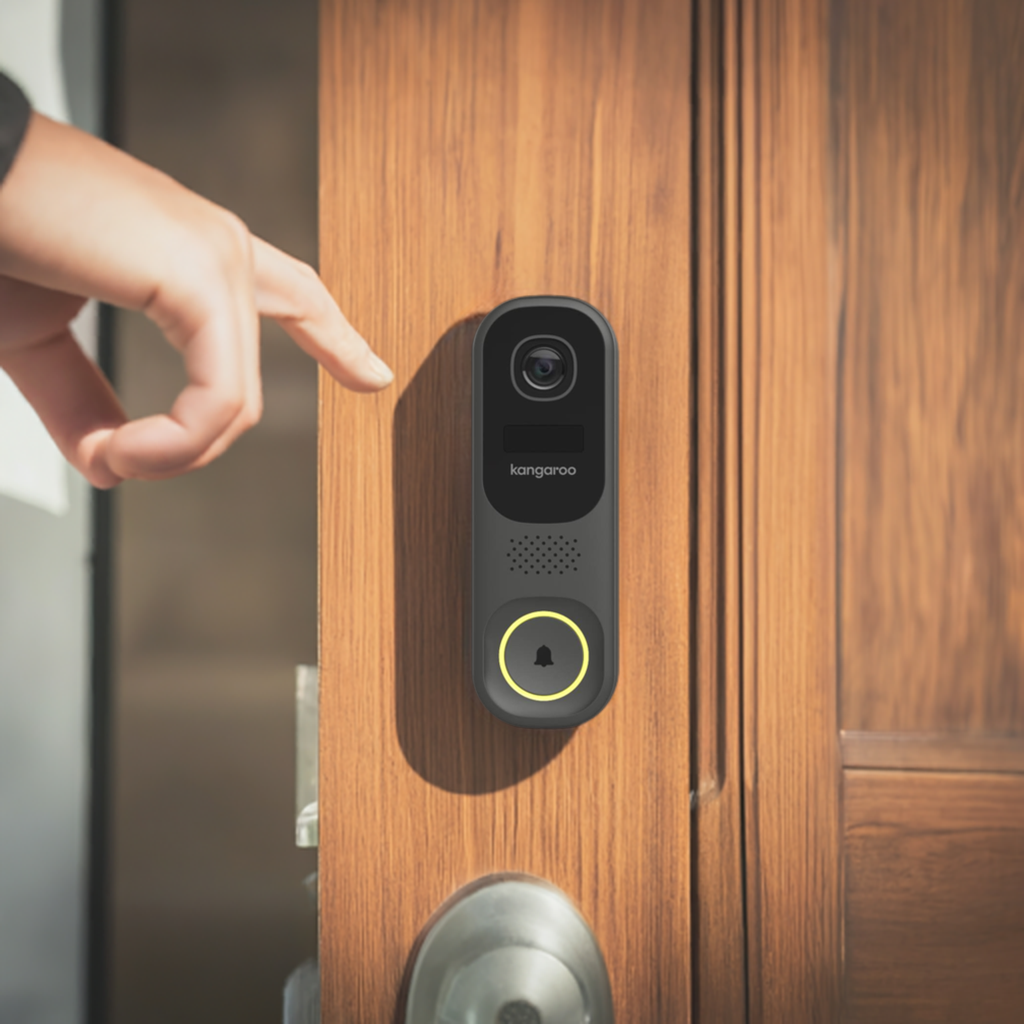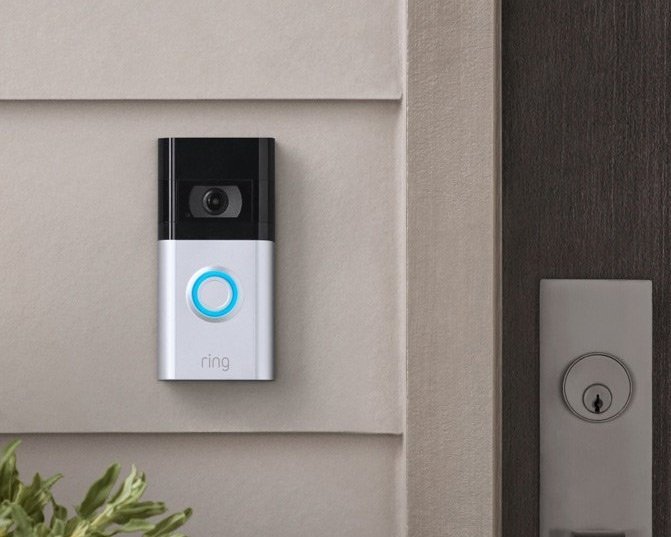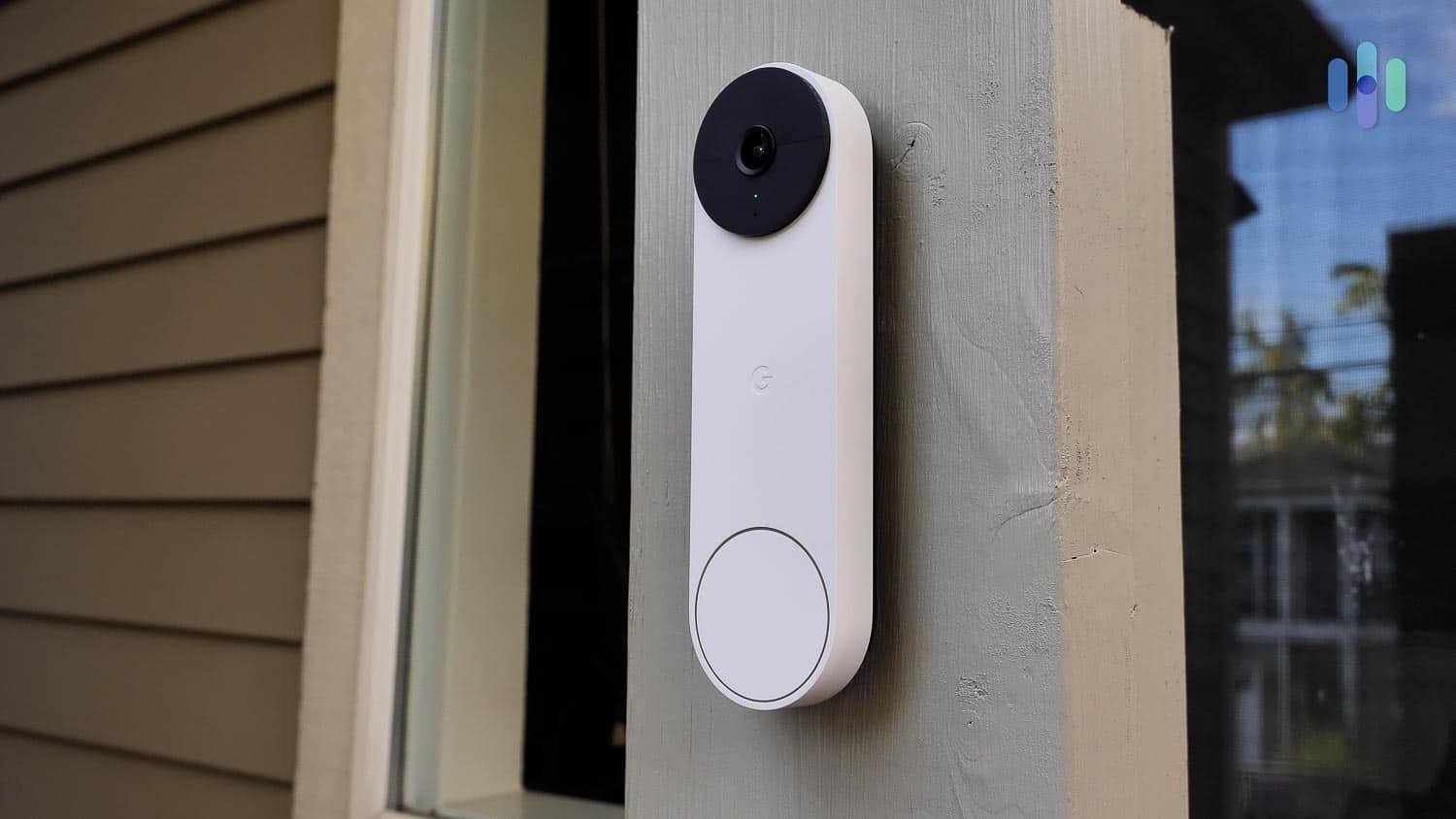What Makes the Best Doorbell Camera Night Vision
Imagine being able to see in the dark! This has always been a dream, for soldiers fighting at night and for anyone who wants to explore in the dark. Just before World War II, scientists started making this dream a reality with the first-night vision devices. These early versions were clumsy and didn't work great, but they were the first step toward today's amazing night vision technology. Explore the best doorbell cameras without subscription requirements, ensuring affordability.
Types of Night Vision
Night vision technology encompasses various types, each with its unique mechanisms and applications. Here are the primary types:
Image Intensification (I2): This type amplifies existing light, making it possible to see in low-light conditions. It works by capturing ambient light (such as moonlight or starlight) through a lens and then passing it through an image intensifier tube. These tubes increase the number of photons (light particles) and convert them into electrons, amplifying the light and creating a visible image on a phosphor screen.
Thermal Imaging: Unlike image intensification, thermal imaging doesn't rely on ambient light. Instead, it detects heat emitted by objects and creates an image based on temperature differences. Thermal cameras use a special sensor called a microbolometer to detect infrared radiation (heat) emitted by objects in the scene. These images are then translated into visible images, with warmer objects appearing brighter and cooler objects appearing darker.
Active Illumination (Near-Infrared Illumination): Active night vision systems emit near-infrared (NIR) light onto the scene and use sensors to detect the reflected light. This allows for visibility in complete darkness. These systems are often used in conjunction with image intensification technology.
Low-Light Imaging (LLI): Low-light imaging technology enhances the available ambient light to provide better visibility in dark environments. It often utilizes specialized sensors and algorithms to improve image quality in low-light conditions, but it doesn't amplify light to the extent of traditional image intensification.
Each type of night vision technology has its advantages and limitations, making them suitable for different applications ranging from military operations and law enforcement to wildlife observation and surveillance.
Seeing in the Dark: How Night Vision Works in a Doorbell Camera
Night vision technology has come a long way since its clunky beginnings. Today, doorbell cameras equipped with night vision offer homeowners peace of mind by keeping an eye on their property even after dark. Whether you choose a budget-friendly option with a decent night vision range or invest in a feature-rich camera with color night vision, there's a doorbell camera out there to suit your needs and budget. Most of these cameras use infrared (IR) technology for night vision. IR light is invisible to the human eye, but cameras have special sensors that can detect it. The camera emits IR light, which bounces off objects in the scene. The reflected IR light is then captured by the sensor and converted into a black-and-white image.
Can You Trust Your Doorbell Camera's Night Vision?
Doorbell cameras are a great way to deter crime/porch pirates and keep an eye on your property, but what about when the sun goes down? Night vision technology allows cameras to capture footage in low-light conditions, but is the picture always clear and reliable? Let's dive into the world of night vision doorbell cameras and see how much you can trust what you see.
Here are some tips to maximize the effectiveness of your security camera's night vision:
Choose the right camera: Invest in a camera with good night vision capabilities, including high resolution and strong IR illumination.
Positioning is key: Mount the camera where it has a clear view of the area you want to monitor, avoiding obstructions in the IR path.
Consider additional lighting: Strategically placed outdoor lights can supplement the camera's IR and improve image quality.
Beyond Night Vision: Other Security Features
Night vision is just one piece of the security camera puzzle. Modern cameras offer additional features that can enhance your home security:
Motion detection: Cameras can trigger alerts only when motion is detected, reducing false alarms.
Person detection: Some advanced cameras can distinguish between people and other moving objects, like animals.
Cloud storage: Store your footage securely in the cloud for easy access and retrieval.
When it comes to home security, nighttime can feel especially vulnerable. Thankfully, doorbell cameras boast night vision capabilities, allowing you to keep an eye on your property even in low-light conditions. This article explores the night vision features of some popular doorbell camera options: Kangaroo Doorbell Cameras, Nest Doorbell, Ring Video Doorbell/Video Doorbell Pro, Ring Battery Doorbell, Arlo Video Doorbell, and Nest Aware.
A Look at Kangaroo Video Doorbell Camera's Night Vision
Keeping your home secure around the clock is essential, and that includes keeping an eye on things after dark. Kangaroo provides a budget-friendly option for video doorbell cameras. While specifics about its night vision technology may vary, most video doorbells from Kangaroo utilize infrared LEDs to enable night vision functionality, ensuring visibility even in the dark but how well does it work? Let's delve into the details of Kangaroo's night vision technology and see if it delivers a clear picture at night.
Infrared Illumination: The Heart of Night Vision
Kangaroo video doorbell cameras rely on infrared (IR) night vision. IR LEDs on the camera emit invisible light undetectable by the human eye. When this light bounces off objects in the night-time scene, the camera's sensor picks it up and creates a black-and-white image.
Clear View, Limited Range
While the Kangaroo's night vision provides a decent image for identifying people or objects close to the camera (around 9 feet), the picture quality can deteriorate at greater distances. This is because the IR light weakens as it spreads out. However, for most doorbell applications where activity typically occurs right by the door, this range should be sufficient.
It's important to clarify that Kangaroo video doorbell cameras do not offer color night vision technology, which is a more advanced feature found in some doorbell cameras. Color night vision uses ambient light to create a color image, even in low-light conditions. While this provides a more natural picture, it can be less effective in complete darkness.
Works perfectly!
"This product was so easy to install and get started. I can see everything that’s happening even when I’m at work. You wouldn’t think the camera would be so vivid but it is. It reaches across the street to my neighbors yard and is extremely clear. Definitely worth it. I’ve already recommended it to friends and families who have moved recently and we’re looking for a camera doorbell!"
- Mary F., Amazon Verified Purchase
Good price and affordable
"Love, this doorbell, cam easy to install no screws or anything like that necessary. It comes with the sticker so that you can stick it on the outside of your apartment. It works great great battery life great support system easy set up."
- Mecho, BestBuy Verified Purchase
The Verdict: Peace of Mind with Nighttime Visibility
Kangaroo's night vision offers a dependable solution for nighttime security monitoring around your doorway. While it may not provide a color night view and has a limited range, it delivers clear black-and-white video clips or a live feed for close-up activity, allowing you to see who's there even after dark. If you prioritize a wider night-time viewing range or color night vision, you might consider doorbell cameras with more advanced night vision technology.
Related articles:
Best Doorbell Cameras: No Wiring, Just Connection and Security
5 Ways Your Wireless Doorbell Camera Makes Your Life Easier
Night Vision Technology Showdown: Other Brands
Ring Video Doorbell: Ring offers a range of video doorbells, including battery-powered options like the Ring Battery Doorbell. These doorbells utilize infrared LEDs for night vision, allowing them to capture clear footage even in low-light conditions. Ring also offers subscription plans like Ring Protect Plan, which provide additional features such as cloud storage for recorded footage.
Nest Doorbell: Nest, now part of Google, offers the Nest Doorbell, which features high-quality video and night vision capabilities. With a Nest Aware subscription, users can access advanced features like continuous recording and intelligent alerts, enhancing the overall security of their homes.
Arlo Video Doorbell: Arlo specializes in home security cameras, including the Arlo Video Doorbell. This device typically features night vision capabilities powered by infrared LEDs, allowing users to see clearly at night. Arlo also offers subscription services for cloud storage and advanced features.
Ring Video Doorbell Pro: The Ring Video Doorbell Pro is a wired option that offers enhanced features compared to the standard Ring doorbell. It includes infrared night vision for clear footage in low-light conditions, along with customizable motion detection zones and two-way audio.
Battery Doorbell: Battery-powered video doorbells, like the Ring Battery Doorbell, offer flexibility in installation without the need for wiring. These doorbells often feature infrared night vision, ensuring visibility at all hours.
Some video doorbells, such as the Ring Video Doorbell Pro, require existing doorbell wiring for power. These wired options often offer more advanced features and may have improved night vision capabilities compared to battery-powered models. Smart doorbells, such as those offered by Ring, Nest, and Arlo, integrate with smart home ecosystems and offer features like remote access, motion detection, and two-way audio communication, enhancing home security and convenience. Night vision is a crucial component of their functionality, ensuring continuous monitoring regardless of the time of day.
Night vision is just one piece of the puzzle. Modern doorbell cameras boast a range of features that work in tandem to enhance your home security. From motion detection and person recognition to two-way audio communication and cloud storage, these features empower you to deter crime, respond to activity, and maintain peace of mind.
So, whether you're a homeowner seeking a budget-friendly option or prioritize advanced features like color night vision, there's a doorbell camera with night vision technology perfectly suited to your needs. Embrace the power of night vision and keep your home safe, around the clock.
Early Steps: World War II and Infrared Tech
The credit for the groundwork of night vision goes to Hungarian physicist Kálmán Tihanyi. In 1929, he created an infrared-sensitive electronic television camera, initially intended for anti-aircraft defense. This laid the foundation for future developments.
Germany took the next step in the 1930s. AEG, a German electronics company, began developing the first practical night vision devices around 1935. By the war's start, the German army had deployed these "Generation Zero" night sights on Panther tanks and experimented with rifle-mounted versions. These early systems were bulky and required powerful external infrared illuminators, making them cumbersome and easily detectable.
Q&A: What Makes the Best Doorbell Camera Night Vision
Your Questions Answered!
-
Video doorbell cameras cater to diverse preferences, and the main types include:
Battery-Powered Doorbells: Options like the Kangaroo Video Doorbell and Ring Battery Doorbell offer hassle-free installation without doorbell wiring. These are ideal for renters or homes without existing wiring.
Wired Doorbell Cameras: Devices such as the Ring Video Doorbell Pro and Google Nest Doorbell (Wired) use existing wiring to power advanced features like enhanced video quality and night vision.
Smart Doorbells: Brands like Nest, Arlo, and Ring integrate with smart home systems like Google Home, Amazon Alexa, or Apple HomeKit, offering remote monitoring, motion detection, and two-way communication.
-
Night vision in video doorbell cameras typically uses infrared (IR) technology. Infrared LEDs emit light invisible to humans but detectable by the camera's sensor, enabling clear video quality in low-light or dark conditions. Some models, like the Arlo Video Doorbell, even offer full-color night vision for superior visibility.
-
Subscription plans unlock advanced features for video doorbell cameras, such as:
Ring Protect Plan: Provides cloud storage, motion alerts, and extended device warranties for the Ring Video Doorbell lineup.
Nest Aware Subscription: Supports features like continuous video recording, intelligent alerts, and integration with the Google Nest ecosystem for devices like the Nest Doorbell.
Arlo Secure: Offers cloud storage, advanced detection capabilities, and integration with Arlo's security cameras.
-
The Kangaroo Video Doorbell uses infrared LEDs for night vision, allowing it to capture clear footage even in complete darkness. Its simple design and functionality make it a practical option for those seeking an affordable video doorbell without subscriptions.
-
The Ring Video Doorbell Pro, a wired doorbell camera, includes:
Customizable motion zones to monitor specific areas.
Enhanced night vision using infrared technology.
Two-way audio communication for real-time interaction.
Requires existing doorbell wiring for installation and is compatible with the Ring Protect Plan for added functionality.
-
The Arlo Video Doorbell stands out with:
Full-color night vision for clearer nighttime footage.
Integration with Arlo's smart home security cameras for a cohesive system.
Subscription options offering advanced detection, cloud storage, and 24/7 monitoring.
-
Apartment-friendly video doorbells include:
Kangaroo Video Doorbell: A battery-powered, renter-friendly option.
Ring Peephole Camera: Replaces your door's peephole without damage, making it perfect for renters.
Blink Video Doorbell: Compact, battery-operated, and easy to install.








